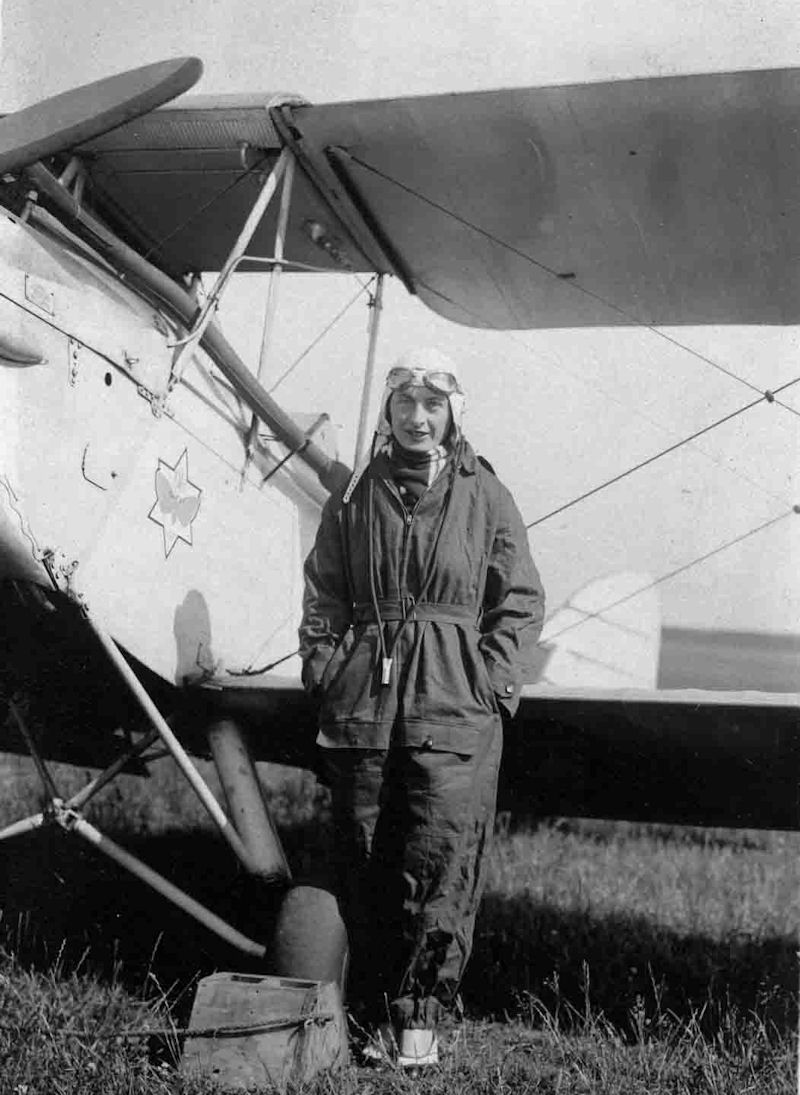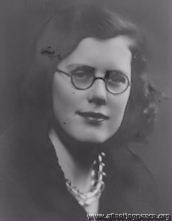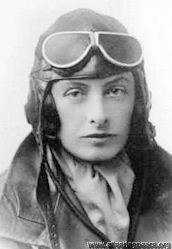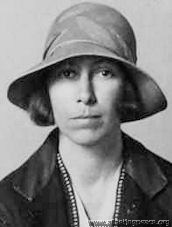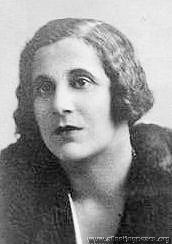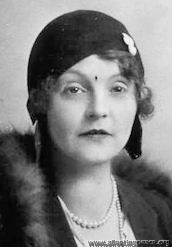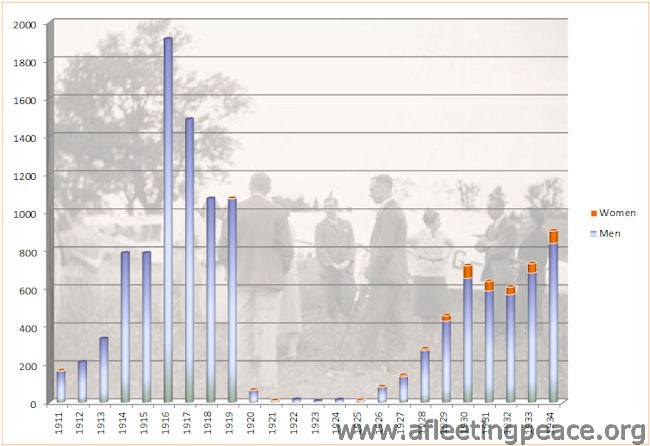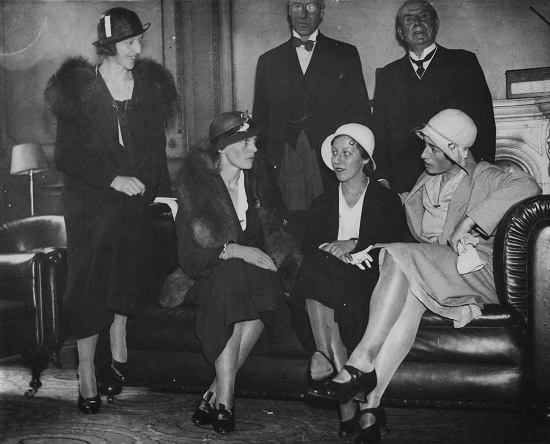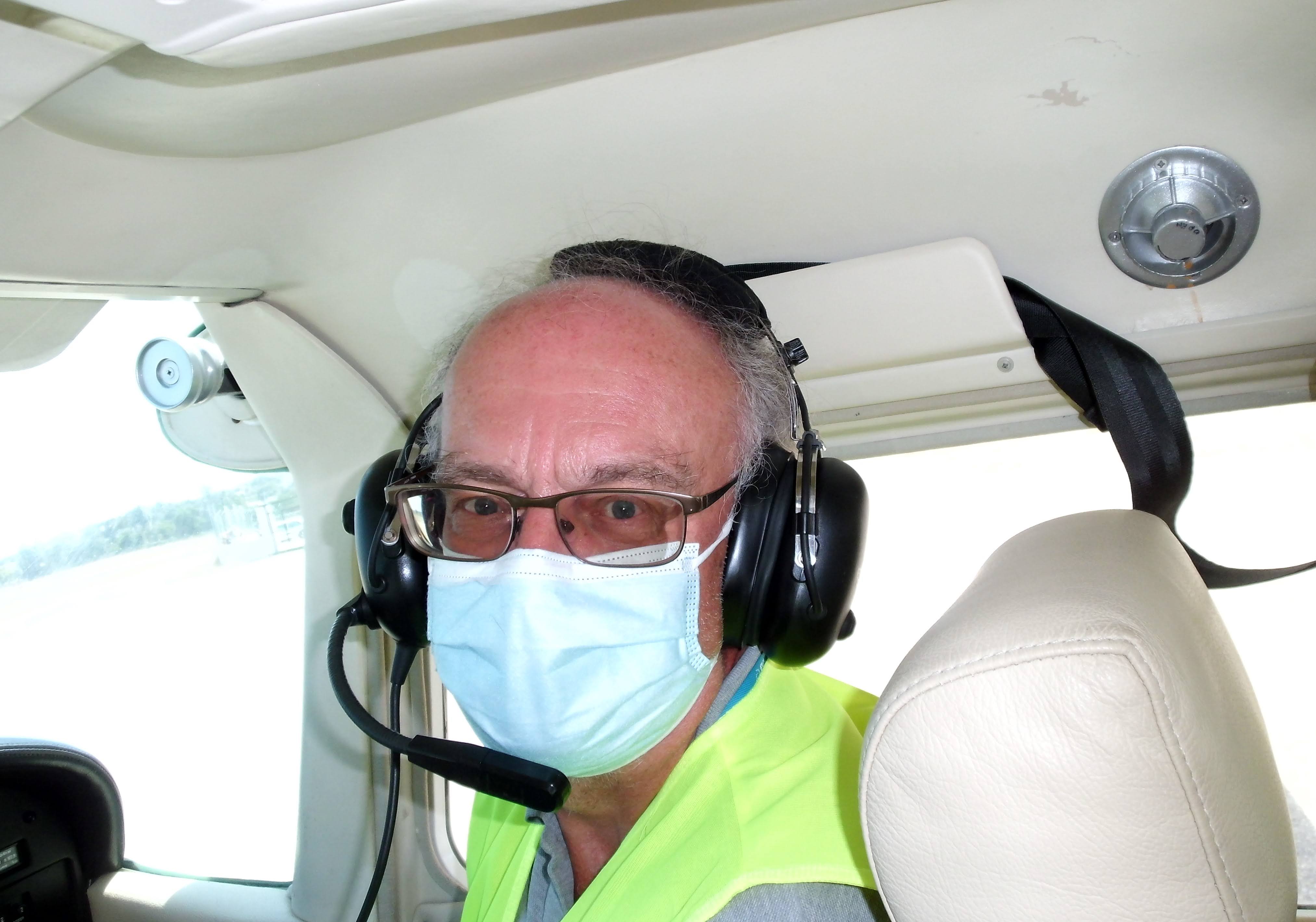Pioneering Women
|
|
|
Here is some splendid stuff from Mary Bertha de Bunsen in 1934, from an article called 'Practical Flying for Women': |
|
| "When present-day landing problems are simplified, the lady owner-pilot upon her daily shopping and visiting rounds is likely to flourish as does her counterpart upon the roads." |
Mary Bertha de Bunsen in 1932, aged 22. |
|
An accomplished aviator in her own right, Mary was born 29 May 1910 in Madrid, the daughter of Sir Maurice, the British Ambassador there. She had been dragged round dances and hunt balls by her parents in the hope of finding her a suitable husband - these were, of course, in short supply after the carnage of WWI. "I was far too innocent to realise... that with a lame leg [after a childhood attack of polio] and horn-rimmed glasses I stood no chance whatever". She never married, and died in 1982 in Dorset. |
|
|
"An owner-pilot, Mrs Hamilton-Gault, has with her husband travelled England and the Continent for four years in a Moth rejoicing in the registration letters 'G-AAGA'. She is an example of the practical lady pilot whose aeroplane is used, when weather permits, for all travelling in England and abroad. Once a week or more, in summer, she flies to London and back to her home in Somerset. She is, however, forced to use the aerodrome at Yeovil - some distance from her home - owing to the lack of landing grounds in the Somerset Hills, which keeps a number of air-minded people in the county from taking up flying." |
Lady G-AAGA (actually, Dorothy Hamilton Gault. That was a joke) see also here for more on her interesting husband, Andrew Hamilton Gault! |
| "...Another lady aeroplane owner, Miss Giles, who has flown several hundred hours, regarded her flying until the last two years more as a sport than a practical means of transport. Now that the number of aerodromes has increased, she is, however, usually able to insist that she will come to the nearest aerodrome, from whence her friends must fetch her." |
Joanna Elder Giles |
|
Elise Battye |
"On an income of £1,000 a year, Mrs Elise Battye keeps a small house within thirty miles of London, a Morris Minor as an essential adjunct to the scheme, and a Moth aeroplane. In the latter she flies 180 to 200 hours a year for under £250 all told. She flies constantly to the Isle of Wight, Gloucestershire and Norfolk - to the last two as many as three times a month - and all these places are unpleasant to get to by any other means." [this is still true, of course] [The average salary in 1934 was somewhat less than £200 a year] |
|
Adelaide Cleaver |
"Mrs Spencer Cleaver makes the usually fatiguing journey to Northern Ireland three or four times a year in her own aeroplane, and, fitted with extra tanks to save refuelling during the day, it has many times enabled her to breakfast in London, shop in Paris from 11 to 1, and return in plenty of time for dinner at her house in London." [see here for more about Adelaide] |
|
Meanwhile, down-to-earth Pauline Gower, who was traipsing about the country with her engineer friend Dorothy Spicer making a living from joyriding, thought that flying "is the best antidote to the manifold neuroses which beset modern women, usually because they have too little to occupy their minds."
Pioneer British LadiesHere's an interesting chart (honest) - it shows the number of Aviator's Certificates issued by the Royal Aero Club each year, from 1911 to 1934, to men and women:
The numbers, in case you ever need them, are:
apart from the fact that hardly anybody (apart from those in the armed services, presumably) learnt to fly for about 6 years after WWI, this means:
On May 26th, 1932, after her solo flight from America, Amelia Earhart was the guest of the Royal Aero Club in London, and amongst the ladies in attendance were Lady Bailey, Amy Johnson, and Winifred Spooner (less than a year before her untimely death).
WHY MISS EARHART FLEW ALONE: 'WOMEN HAVE THE COURAGE TO MAKE RECORDS'. Miss Earhart spent a busy day in London yesterday. In the morning she went shopping, attended the Institute of Journalists' luncheon in the afternoon, and finally gave an interview to journalists. Replying to questions, she said: 'I had made up my mind to fly alone, because if there is a man in the machine you can bet your life he wants to take control. Well, I had already flown the Atlantic with men in control, and I was determined that if I did it again was the one who was going to control the machine'. Miss Earhart expressed the opinion that women had a greater capacity for physical endurance than men, and'with aeroplanes developed to such state of efficiency many of them plunged in where a man would hesitate. Miss Peggy Salaman is to have tea at the American Embassy to-day with Miss Earhart and her hostess Mrs. Bruce, the Ambassador's daughter. Miss Earhart said that her flight had added little to aviation 'because, after all, the Atlantic has been crossed many times. The trip was merely a personal satisfaction to me.' (Western Morning News - Tuesday 24 May 1932) "MISS EARHART CREATES ANOTHER RECORD. Miss Amelia Earliart, the heroine of the latest Atlantic flight, met two of Britain's great flyers, Mr J A. Mollison and Miss Amy Johnson, London, yesterday. She was entertained at lunch by the Committee of the Royal Aero Club, and after lunch a reception was held which Miss Earhart answered questions put by members of the club. Lord Gorell, introducing Miss Earhart, said that this was the first time that women had been admitted to the club. The Committee had felt that an air record having been created, one should also be set on land." (Western Daily Press - Friday 27 May 1932)
Rear: Lord Gorell, ?? Front: Lady Bailey, Amelia Earhart, Amy Johnson, Winifred Spooner "MISS AMELIA EARHART (Mrs. G. P. Putnam) was the guest of honour at a reception held at the Royal Aero Club on Thursday last, May 26. Miss Earhart was introduced to the members by the President of the Club, Lord Gorell, and in answer to questions she informed them that her altimeter ceased working soon after she left Harbour Grace. When she came near the Irish coast, therefore, she did not think it advisable to go straight over the southern end, as her maps did not allow her to gather the height accurately. Moreover, she was at that time flying in very thick, thunder-stormy weather, with bad visibility. She therefore went up the coast some way until it was clearer, where she found a railway. This she followed in the hopes that it would lead her to a large town where she, being American, naturally expected to find an airport. As it was Ireland she was flying over, she was disappointed, and on finding Londonderry she flew round until she found a field of suitable size into which she could land her "Vega" She said that she did not make any allowance for the wind during the trip as she was flying a great circle course over which the effect of the wind balanced itself out, as during the first part the drift was southerly and during the second part northerly. For her direction, as she had to fly "blind" from 11.30 p.m. till dawn, she relied largely upon her directional gyro, and checked this by her two magnetic compasses. Present at the reception were also many English lady pilots, including Lady Bailey, Miss Amy Johnson and Miss Winifred Spooner." (Flight) After the outbreak of WWII, Mary Bertha de Bunsen joined the Air Transport Auxiliary. The ATA performed an essential role throughout WWII, delivering aircraft from factories and maintenance units to airfields; the women's section was assembled and led by Pauline Gower. There were 168 women pilots in the ATA (out of a total of 1,322), plus dozens of women who were trained as pilots. See here for their stories: - Women Pilots - (ata-ferry-pilots.org) Here is a list of the pioneering women (those who took their Royal Aero Club Certificate before 1930) who made this possible. |
|||||||||||||||||||||||||||||||||||||||||||||||||||||||||||||||||||||||||||||||||||||||||||||||||||||||||||||||||||||||||||||||||||||||

